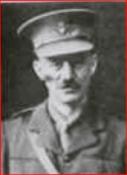
|
The King's School Canterbury |
Roll of Honour |
| Captain James Randolph Innes HOPKINS | |
|
D Company, 5th (Saskatchewan) Battalion, Canadian Infantry Date of birth: 5th October 1876 Date of death: 24th May 1915 Killed in action aged 38 Buried at Le Touret Military Cemetery, Richebourg-L'Avoue Plot II Row B Grave 15 |

|
| He was born at Nunthorpe in Yorkshire on the 5th of October 1876, the youngest son of Sir William Randolph Innes-Hopkins JP DL, colliery owner, and Evereld Catherine Eliza (nee Hustler) of The Seat House, Malton Norton in Yorkshire. He was educated at the King's School Canterbury from September 1890 to July 1895 where he was granted a Junior Scholarship in July 1890 and a Senior Scholarship in July 1893. He was appointed as a monitor in 1894. He went on to Corpus Christi College, Oxford on an Exhibition in October 1895 where he achieved 3rd Class Classics Moderations in 1897. He graduated with a BA in Greek Philosophy and History in 1898. On leaving university he joined his father coal business. He was married to Doreen Maud (nee Parker) at St Luke's Church, Chelsea on the 29th of September 1904. They had a daughter, Evereld Adela who was born in 1905 and they lived at 35 Beaufort Gardens in South West London. Following his death Doreen re-married to Thomas Sackville-Manning on the 6th of October 1915. He enlisted at Newcastle-on-Tyne as Trooper 3177 in the 14th (Northumberland) Company, 5th Battalion, Imperial Yeomanry on the 2nd of January 1900. At a medical examination, which took place on the same day, it was recorded that he was five feet eight and half inches tall and that he weighed 146lbs. It was also recorded that he had a pale complexion, grey eyes and light hair. He embarked for service in South Africa on the 2nd of February 1900 and was commissioned as a 2nd Lieutenant in the regiment on the 12th of October 1901. He saw action in the Cape Colony, in the Orange Free State and in the Transvaal and was awarded the King's Medal with three clasps. On his return he worked as an Assistant Manager for a coal company but was declared bankrupt at a hearing on the 26th of October 1906 at the Official Receiver's Office in Middlesbrough. At the time he was living at Elm Grove, Grange Road in Darlington. He moved to Canada later in 1906 where he worked as a financial agent firstly at Winnipeg and later at Saskatoon. While living there he joined the 27th Light Horse, Canadian Militia in 1913 where he served as regimental Adjutant. At the outbreak of war he immediately offered his services and volunteered for overseas service at Valcartier Camp, Quebec on the 22nd of September 1914. At a medical examination, which took place at Valcartier on the 31st of August 1914, it was recorded that he was five feet nine and a half inches tall and that he had greyish blue eyes and fair hair. He was granted a commission with the rank of Captain in the 5th (Saskatchewan) Battalion, Canadian Infantry on the 22nd of September 1914. He arrived in England at Plymouth with the first Canadian contingent on the 14th of October 1914 as the commanding officer of D Company and was stationed at Salisbury Plain during the winter of 1914-1915. He went to France in February 1915 arriving in the area of Hazebrook/Strazelle on the 15th of February. In May 1915 the battalion was detailed to attack a German trench and redoubt where an enemy machine gun position known as K5 was sited. Having rested and cleaned their weapons and equipment during the 23rd of May 1915 the battalion moved out of their rest area at midnight and into the trenches. The attack went in at 2.45am on the 24th of May and, after crossing a 10 foot ditch by laying wood across it, they bombed their way up K4 to K5, their objective. The junction of K4 and K5 came under a tremendous German artillery barrage and despite this the men dug in and held their new position. Attempts by the Germans to form a counterattack were broken up by the supporting British artillery. They were relieved at 1am the following morning having suffered casualties of five officers, eleven NCOs and thirty men killed, with a further eight officers, thirty NCOs and one hundred and thirty one men wounded. His date of death is incorrectly recorded by the Commonwealth War Graves Commission as the 25th of May 1915. A brother officer wrote: - "He was by far the most popular officer we had, and his loss will be deplored by all ranks, as he was beloved by us all." He is commemorated on the war memorial at Corpus Christi College, Oxford. |
|
Back